
When all roads lead to Rome
A student reflects on how her long-time dream to live and study in Rome became reality
Kelly Mueller, Classics/History Double Major
I’ve wanted to go to Rome for as long as I can remember, and even more so when I started studying Latin in high school.
When I enrolled at Loyola, I knew that my junior year was my opportunity to study abroad in the Eternal City. Being a Classics and History double major, I felt the program and the experience would be a perfect fit.
In Rome I was able to visit, see, and study so many places—every day was a mixture of learning new things while appreciating the old. For me, being abroad was an amazing combination of international immersion, adventure, and learning through art, architecture, food, and culture.
Here are few highlights from my time in Rome...
Pantheon
My friends and I stumbled across the Pantheon during our first week abroad. The Pantheon was completed under Hadrian in 126 AD, and it still commands respect and awe from tourists and locals alike. It was during that week that it really hit me: I was studying abroad in Rome. I could visit cool historic places like this whenever I wanted, because I could almost certainly walk there in under 20 minutes. Rome is a lot smaller than most people think, and the historic center where the Pantheon, the Roman Forum, the Colosseum, and the Trevi Fountain are located is even smaller.
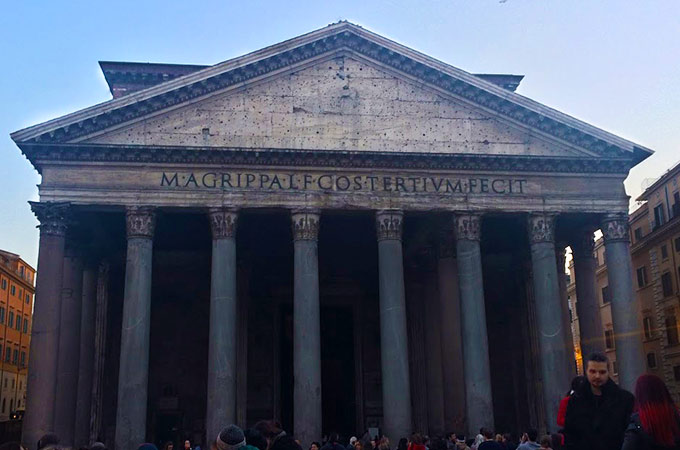
Colosseum
The next day, we spent our morning in the Colosseum. The towering walls give way to rows of seating that have since deteriorated due to weather over time, but you can still tell that this was a massive gathering place for ancient Romans hungry for entertainment. In fact, experts believe that the Colosseum sat around 50,000 people and, unbelievably, could fill and empty in about five minutes due to the 80 numbered entrances and the highly structured seating system, organized by social class. Actually being at a site really changes the way you understand it, which is one thing I learned time and time again in Rome.
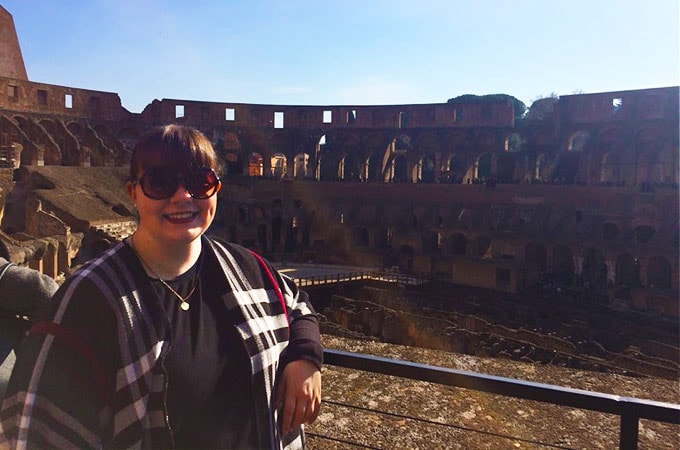
Roman Forum
After the Colosseum, we took a stroll across the street to the Roman Forum (which is included in the same ticket—sweet!), where we walked the paths that countless Romans tread. We gazed in awe at the Basilica of Maxentius and Constantine, which, despite its towering height, isn’t even the full height it once commanded. We climbed up the Palatine Hill that skirts the Forum and were rewarded with an amazing view of the ruined monuments, temples, and law courts. The view commands the attention of any who visits—and has a special place in my heart.
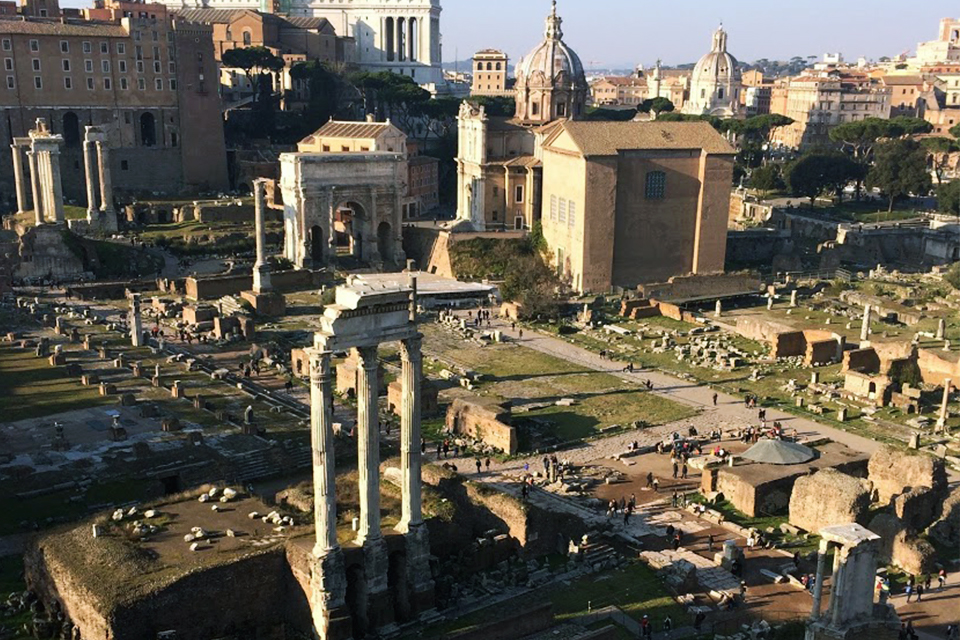
Claudian Inscription
One of the things I wasn’t quite expecting when I went to Rome was just how well integrated the ancient city is with the modern city of Rome—so much so that it could be easy to miss historical points of interest as you were walking around. I was speaking with my Latin teacher before class and I told him where my host family lived. He asked if I'd seen the Claudian inscription on Via Pellegrino yet. I walked down Via Pellegrino every single day to get to class, but I had never noticed any inscription. Sure enough, next time when I looked for it, I found this gem posted on the side of a shop. It made me so happy to find this piece of history from one of my favorite emperors so close to where I was living. History permeates Rome, be it the political machinations of the early Roman empire or the social intrigue of Medieval Rome. It’s all there waiting to be found, explored, and enjoyed.
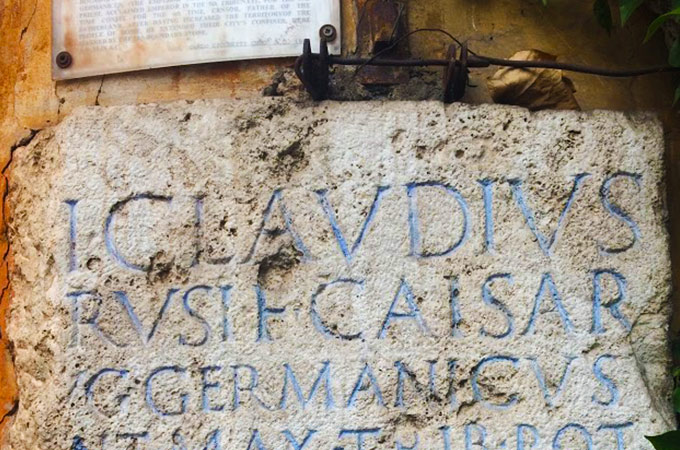
The Capitoline Museums
The Capitoline Museums did this cool thing on the weekends during March during my spring semester abroad where entrance between 8 p.m. and midnight was only €1 (that’s less than it costs to get a slice of pizza). This museum is home to amazing pieces of Roman history, including the giant head of Constantine, the equestrian statue of Marcus Aurelius, and a bust of Commodus as Hercules. But this bronze probably outshines them all. The she-wolf is featured on countless ancient coins and flags and continues to be a source of pride for the modern city of Rome. It helps that this she-wolf, as indicated by the two baby boys underneath her, helped save the twin founders of Rome after they were abandoned and sent down the Tiber river by their evil grand-uncle (long story). Rome knows where thanks is due, so this bronze representation of their favorite she-wolf will continue to be a symbol of Rome, both ancient and modern.
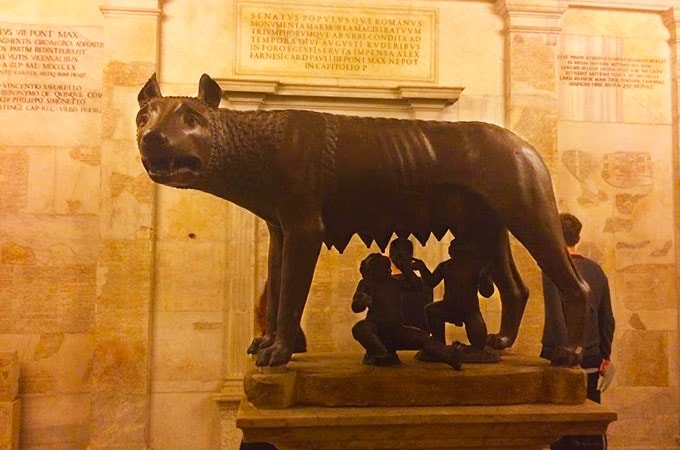
St. Peter’s Basilica
One of our group’s favorite pastimes was finding the tallest thing in whatever city we were in and climbing to the top of it. Yes, I know it sounds slightly ridiculous, but you would change your mind if you saw the pictures I got from the top of some of the most famous “tall things” in Europe. I climbed il Duomo in Florence, the Eiffel Tower in Paris, and St. Peter’s Basilica in Vatican City, to name a few, and the views were well worth the climb every time. St. Peter’s was probably the hardest climb, with 871 steps. At the top, I was rewarded with this beautiful view of St. Peter’s Square and the city of Rome. It was truly breathtaking to see so much of this beautiful city I was calling home at the time, and I loved just taking in the immensity of it all.
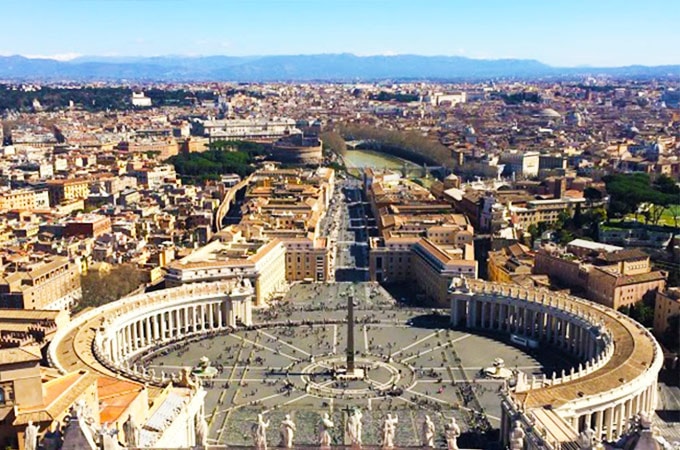
Castel Sant’Angelo
Admittedly, I took an ungodly amount of selfies while I was in Rome. One of the coolest selfies I captured was on top of Castel Sant’Angelo. This pentagonal fortress was originally the Mausoleum for Hadrian, his family, and the emperors and imperial families to follow, but was transformed into a papal stronghold during the Middle Ages. While the normal price to get into the castle is €14, I managed to get in for free by flashing my student card. It was a beautiful castle to explore with papal art and decorations, but my favorite spot was on the very top of the castle. Since it's located right along the river, about parallel to the Vatican, I figured that this was the best opportunity I was ever going to have to get a shot with the entire Basilica of St. Peter in the background. Thus, this selfie was born!
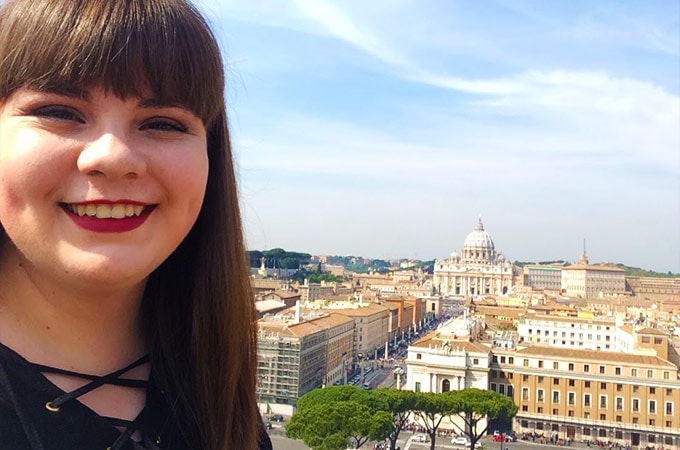
Easter in St. Peter’s Square with Pope Francis
Another highlight from my trip was celebrating Easter in St. Peter’s Square with Pope Francis. The Vatican was only a 15-minute walk from my home (never thought I would be able to say that), so it wasn’t too much of a hassle to get there early in order to get a good seat.
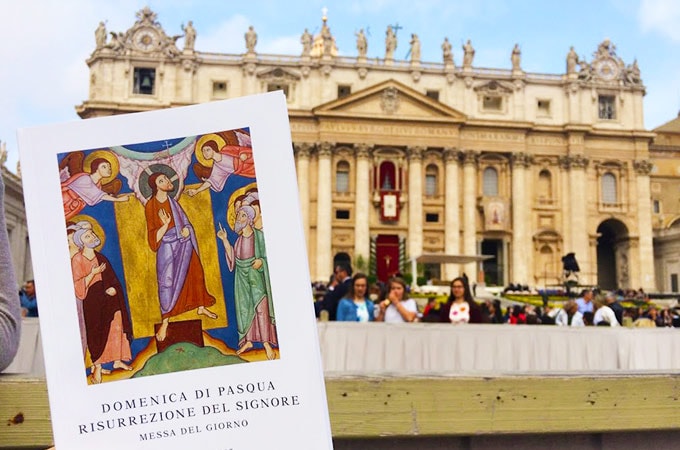
Weekend Warriors
Ancient Ostia
One of the first trips I took outside of Rome was to Ancient Ostia, Rome’s port city, which is about 19 miles outside Rome towards the coast. In fact, it’s close enough to Rome that we were able to use the Rome Metro system to get there. Ostia has its own forum, bath houses, temples, entertainment district, and synagogue. The main theater is my favorite spot in the city because it’s well-preserved, considering its age. You can climb up to the top of the seating area and get a feel for what it would have been like to go see a show in Roman times. One of the coolest parts of the theater, though, is that they still have some of the decorations on display.
Tuscany
Our entire program took a trip to Tuscany. We based our trip out of Siena, which is famous for its central square, Piazza del Campo, home of the Palio. The Palio of Siena is a huge racetrack where, every summer, representatives from each of Siena’s neighborhoods race on horseback. Tuscany is renowned for its unique cuisine, including dishes that feature duck and wild boar. I exercised my courage and my taste buds throughout our entire trip. My favorite was definitely the wild boar, the dish was called “tagliatelle con cinghiale.” The meat was so tender and the pasta was homemade—what could be better?
Florence
When I decided to study in Rome, I knew that I had to make it to Florence. Besides climbing il Duomo and exploring the various churches in Florence, my friends and I also took the opportunity to explore the art museums of Florence. Not surprisingly, given its centrality and power during the Renaissance, Florence is home to two of the best art museums in Europe, the Uffizi Gallery and the Galleria Academia. The Uffizi is home to some of the most recognizable pieces of art, including the David and Boticelli’s “Birth of Venus” and Caravaggio’s “Bacchus.”
Amici
One of my favorite parts of studying abroad in Rome was getting to know the other Loyola students in the program. There were only 13 of us, so it was easy to get to know everyone really well. These 12 people enriched an already wonderful semester in Rome, and I’m thankful that this semester brought us together as amici.
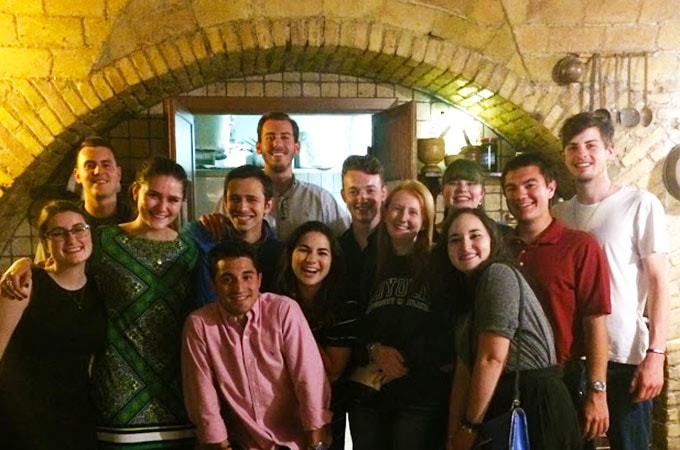
No matter where you go, the people you connect with when you study and live abroad will have shared this once-in-a-lifetime opportunity with you, so you’ll always have them to talk to when the rest of your friends and family are sick of hearing you blab on about how great Rome was. Promise.
So here’s to Rome, grazie per quattro mesi meravigliosi e ti vedo presto!
Learn more about Study Abroad